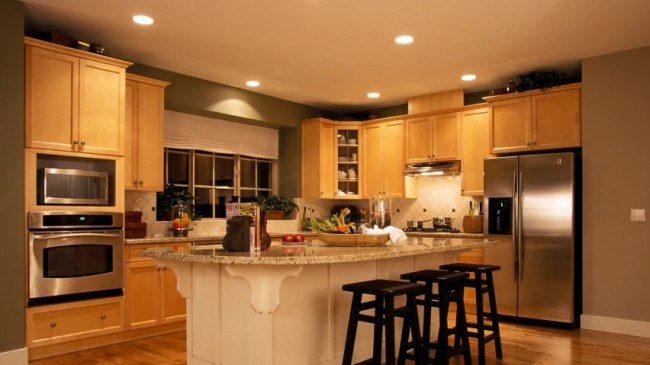LED Lights: Lighting Our Future
By Alison Mercer
Talk about LED lights has increased so much over the last five years, it's easy to forget that this brilliant piece of technology has been around for more than 50 years – yes, half a century! And we've been enjoying it in our daily lives for almost as long – in our calculators, clock radios, stove and microwave displays and, more recently, in our holiday lights. It was this big push to convert to LED holiday string lighting that brought the technology to the forefront of consumers' minds. Alas, even in the 1990s, LED use was limited by its colour and temperature quality. Today though, LED technology can produce bright, white light, which has led to it becoming a legitimate contender to take over the residential sector as a source of everyday lighting.
Here's the skinny on LEDs right now:
Cost Savings
LEDs, or Light Emitting Diodes, can create an equivalent number of lumens (unit of light measurement) with less than 25% of the watts (unit of energy) required by incandescent bulbs. In other words, a 23 watt LED bulb will be as bright as a 100 watt incandescent bulb. This means a 75% reduction in hydro costs, which, if incorporated across multiple fixtures, can mean significant cost savings over time.
Energy Savings
Not only does a 75% reduction in hydro mean lower costs, it has a positive impact on the demands made on municipal power grids.
Everyday Lighting
Now you can retrofit almost any light fixture because LED bulbs are increasingly available in a variety of socket sizes, including the Edison base, which is the most common incandescent bulb base. All you need to do is pick up an LED bulb with the right base and fit it into your existing fixture to start saving money and energy.
Light Temperature
Incandescent light bulbs have a light temperature of approximately 2700 Kelvins – this rating sits squarely in the yellow zone of the spectrum. Being in this zone means the light is warm, welcoming and flattering. The higher the Kelvin rating, the cooler the light temperature. Most LED bulbs will have a Kelvin rating on the packaging, or at least say “cool” or “warm”. As most of us prefer warmer light for our living environments, choose the warm bulbs for between 2700-3000 Kelvin.
Reliable
LED technology is versatile and reliable. Most LEDs are dimmable and don't flicker, this is due to them employing solid-state technology. Provided you use the proper dimmer compatible to your LED fixture. Finally, LEDs require no warm-up time and are therefore at maximum brightness as soon as you switch them on.
Long Lasting
You'll probably have noticed that LED bulbs cost significantly more than incandescent or even Compact Fluorescent (CFL) bulbs, this is because LEDs will last up to 50,000 hours. That's about 22 years of use if the bulb were in use for six hours a day, everyday of the year. Many LED fixtures don't even offer the possibility of bulb changes, the logic being that by the time the bulb burns out it'll be time to update the fixture. And the good news continues because LED bulbs are still coming down in price, making the value proposition one of increasing returns.
SOURCE: http://www.hgtv.ca/decorating/article/led-lighting/?guide=decorating

